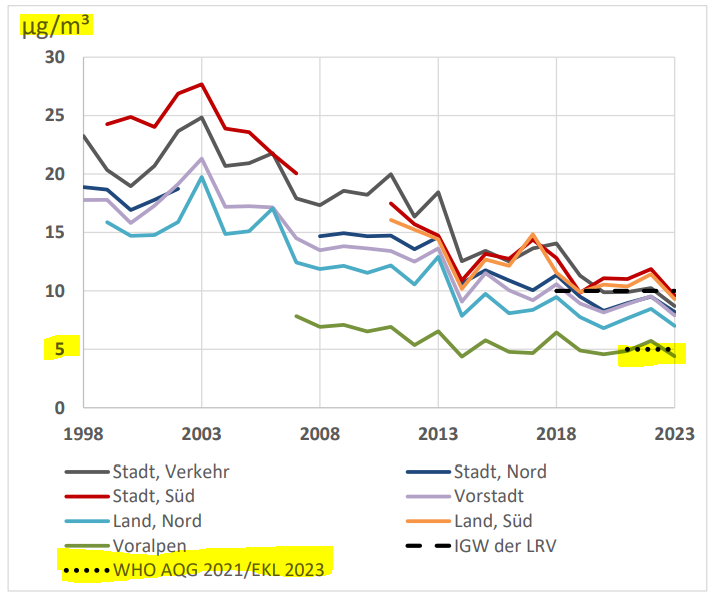Swiss wood burners emit more carcinogenic Particulate Matter than traffic
Particulate matter (PM) and especially PM2.5 results primarily from combustion and is one of the most prevalent, impactful and most studied air pollutant around the world, including in Switzerland.
Despite this, the biomass industry and its supporters still claim that burning more trees actually leads to less air pollution. Take this statement by Holzenergie Kanton Bern:
“Between 1990 and 2021, the amount of energy wood used in Switzerland increased from 3.3 to almost 6 million cubic meters per year. In the same period, particulate matter emissions from all wood heaters decreased from 6,000 to 2,000 tons per year. More wood energy means less fine dust!”
This is a classic example of a non sequitur fallacy.
So let’s unpick it.
PM2.5 concentrations did indeed decline steeply until 2014 (though they have stabilised in the years since — see graph), but only because legislation was introduced to clean up industrial combustion processes and vehicles, especially Heavy Goods Vehicles (HGVs), which both emitted substantial quantities of PM.

In contrast, NOTHING has been done to clean up domestic wood burning stoves, which still do not legally require filters. Indeed filters are usually, but not always, only installed on biomass-burners of 70 kW or over.
This means that in Switzerland, heating with wood is by far the biggest source of carcinogenic PM emissions linked to combustion, responsible for around 16% of all fine particle emissions — more than that derived from traffic. In winter, wood burning stoves become the most important source of local PM pollution. Domestic stoves and fireplaces also generate copious quantities of toxic nitrogen oxides, carbon monoxide and volatile organic compounds (VOCs), much more in fact than oil or gas-fired heating systems.
“Just a couple of households can pollute an entire neighbourhood or valley floor through badly functioning fireplaces,” according to Dr Christoph Hüglin, lecturer at the Laboratory for Air Pollution /Environmental Technology (EMPA).
November, 2024
